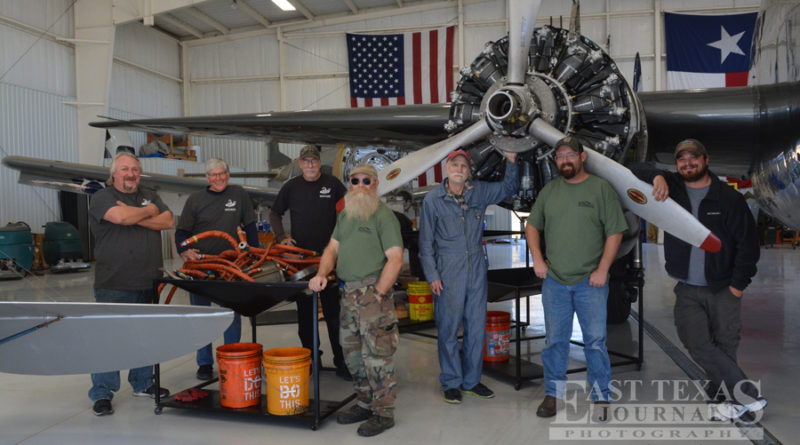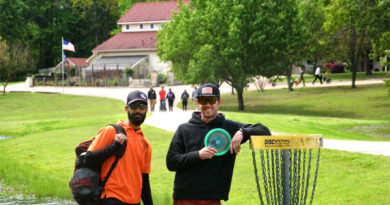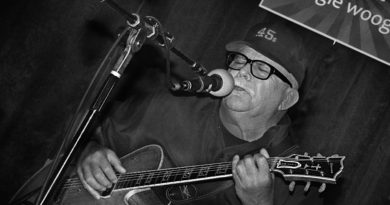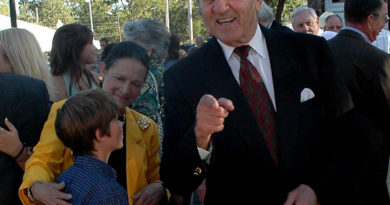War Birds Draw Team into Mid America Orbit
A retired Air Force Chief Master Sergeant, “Steve Garrett is our saving grace,” said Kaukauna, Wisconsin native Matt Bongers, who landed in Mt. Pleasant at 22 in the spring of 2012 as the first Chief Mechanic of the Mid America Flight Museum.
“Steve started as a military fuel mechanic and moved up to the highest possible rank an enlisted man can reach,” Mr. Bongers said. “He commanded a squadron of 450. He’ll sweep and mop the hanger or he can take control of a moment when the scope of the restorations we do seems overwhelming. We joke about Steve-isms, the stories he tells at the same time he’s explaining how to simplify any job, breaking down complex processes to a series of simpler tasks.”
Chief Master Sergeant Garrett retired to this part of Texas because of a night at a backyard barbecue of military personnel where he began describing the place he wanted to retire.
“There was a girl listening who said I should consider her hometown, Pittsburg, Texas,” he said. Mr. Bongers made a connection when museum founder Scott Glover arrived in Santa Fe to pick up a plane he’d purchased.
“I was working in the shop where it was being made ready,” Mr. Bongers said. “The deal came with extra parts so I made a deal with Scott to load them in my pickup and drive them to Texas so I could see his planes. We spent a couple of days flying. Went to Shreveport, went to Dallas, had a good time. The Sunday afternoon I was leaving, he offered me a deal – a three-month trial. I didn’t tell him but when he found out from my old boss I’d quit my job when I left Santa Fe. I’d been with him a year before he told me why I got a shot at my dream job.”
His first nine months, he worked alone, stripping down a Lockheed Lodestar. “That’s a 1941 transport plane,” he said. “I gutted the interior, pulled the engines apart, pulled the instrument panel and when we put it all back together I didn’t have to buy the parts to make it better. It was the most satisfying work I’d done since high school days building hot rods.”
When he feels a need for a voice of experience, Tommy May and his crew are just around the corner at the Mayaire hanger.
“It’s an incredible shop,” Mr. Bonger said. “They do great fabrication work when we need it. The planes we restore are as unique as they are old. You don’t just call up the warehouse and order parts.”
Billy Packard rounds out the museum’s full time paid staff, a mix of skills and people pulled into the same orbit by a shared passion for planes.
“Billy Packard is a radial engine genius,” Mr. Glover said. His father and grandfather were aircraft mechanics. He moved into the loop because he was working as a contractor on the Columbine Constellation, the original Air Force One owned by a friend of Mr. Glover’s.
“I was working on the engines and Scott flew out his crew to help with work on the air frame,” Mr. Packard said. “We started visiting about his HU 16, his first amphibious plane. We talked for a year, mostly about that plane. Then he got his Mitchell B-25, a really great old bomber that flew off of aircraft carriers. I was out in Arizona. I got here in October of 2016 to work on the B-25. I’ve quit traveling. This is home.”
There’s a thought shared by kindred spirits. “It’s a growing museum always in a state of change,” Mr. Bongers said. “It’s like painters paint because they love to paint. We’re here because what we love being is here.” He said Mr. Glover taught him to fly. 




